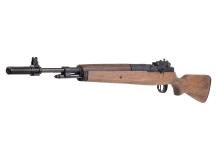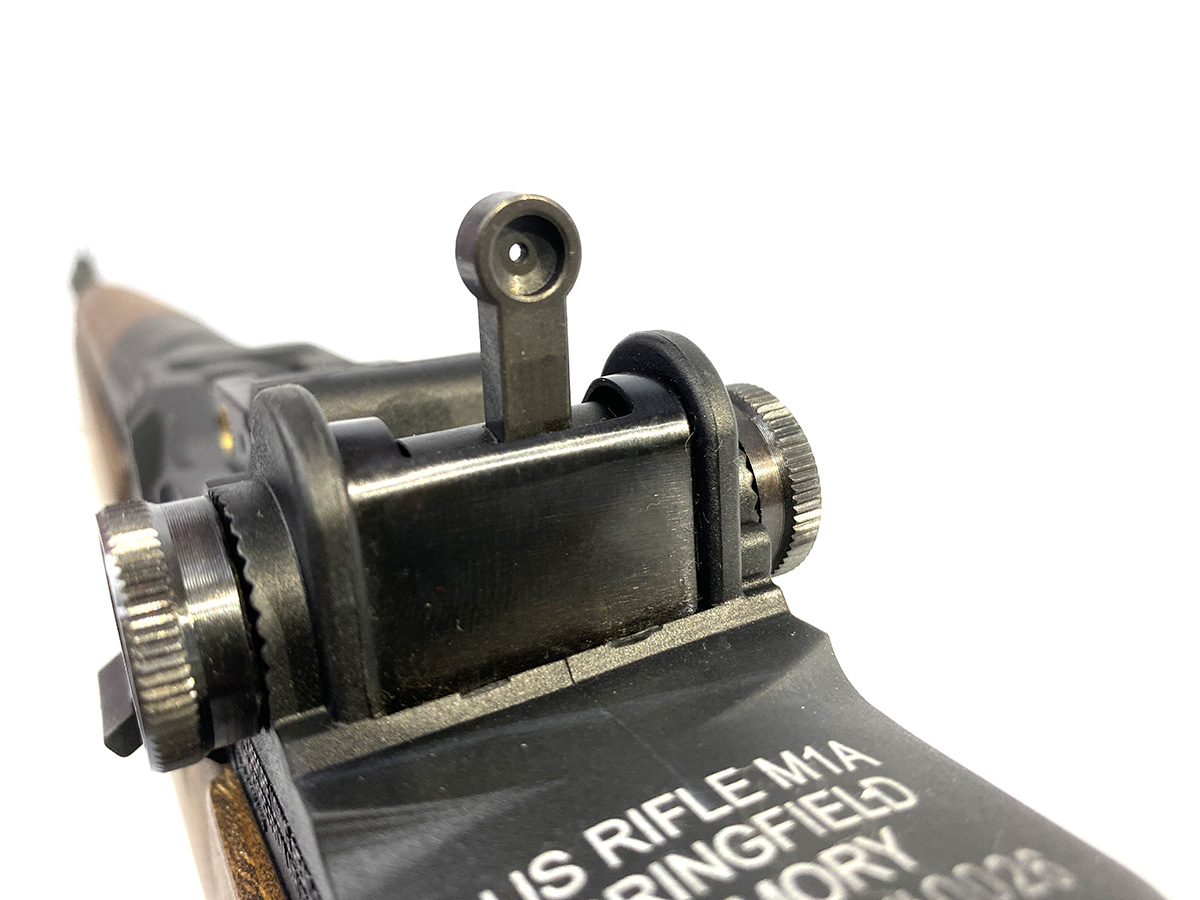Definitive Guide to Springfield Armory M1A
The Springfield Armory M1A is undoubtedly one of the most important weapons of our recent history. Its massive power and long-range accuracy made it a soldier's best friend on the battlefield and the enemy's worst nightmare. There's nothing new about creating airgun replicas of historic firearms, but this particular replica takes things to a new level.
Most airgun replicas run off CO2 gas, using a small 12-gram or the larger 88-gram disposable cartridges. Rather than just create another CO2 replica that's only good for shooting paper up close, Springfield Armory built the M1A replica around a powerful underlever spring chassis. This system is capable of producing up to 800 FPS with lead pellets. More on this below, but our review gun posted 997 FPS with the 11.9 grain RWS Hobby pellets after the break-in period.
When you take the M1A out of the box, you may notice a few things right upfront. First of all, it's got some weight to it coming in at 9.9 pounds, precisely what the national match firearms weigh. The wood stock is really nice, and it feels great when you pull it to the shoulder. The sights are amazing, there's simply no other way to put it. It should be a crime to put a scope on this gun. For those who insist on using an optic, you can mount a scope via the special scope mount using the mounting points on the left side of the receiver, but there's no reason to with these sights.
The rear sight is fully adjustable for windage and elevation. The left knob raises and lowers the peep sight, and the right knob adjusts it left to right. It took all of about four shots to get this on target at 25 yards.
The single-stage trigger was also a very pleasant surprise. All you feel is a light, smooth pull until the trigger breaks and the gun fires. It's very predictable and easy to master and there is a manual safety in the trigger guard.
Most of the time, spring and gas ram airguns are operated via a break barrel design. To shoot the rifle, you would "break" the barrel at the barrel joint, pull the muzzle towards the stock until the piston engaged the sear, and then return the barrel to the locked position. Over time, the barrel joint on these airguns, especially lower-end models, wears out and causes a total loss of accuracy. The underlever action on the M1A solves this completely.
An underlever airgun uses a fixed barrel design and incorporates a separate cocking lever under the barrel. When the shooter cocks the gun, the top of the gun slides open, revealing the breach where you load the pellet. There's a catch on the side of the action that releases the lever so it can be returned to the closed position. Sometimes this shorter lever can make it difficult to cock the gun, but the M1A has that covered. There's a built-in cocking extension that pulls out, giving you a lot more leverage when cocking - dramatically reducing the cocking force.
Spring airguns tend to have a reverse recoil that makes them very difficult to master but this is not the case with the M1A. We were impressed with just how easy it was to achieve repeatable accuracy without resorting to any special hold technique; just shoulder and shoot. We tested shooting off bags, rests, or freeholding and all the results were the same due to the overall weight and balance of Springfield's M1A.
When you combine the fixed barrel accuracy and the ease of cocking, you find yourself with an excellent all-day shooter. Whether that's in the backyard, at the range, or out in the field taking small game.
Accuracy & Power
Shooting 18.13 grain JSB pellets, we shot five-shot groups with a CTC (Center-to-Center) of about a quarter. As a back yard target gun, the Springfield M1A shows excellent accuracy.
We adjusted for various ranges just to see if it would still hit consistently and at 25 yards with the sights all the way down, aimming at the bottom of the diamond, we hit slightly high left of center. At 50 yards, with the sights in the same configuration, we hit the center of our steel silhouette turkey. We then raised the sight four clicks, and sure enough, we hit the steel piggie at 75 yards. Adjusting four more clicks up, and we were hitting the steel ram at 100 yards. This simple, affordable, spring airgun is able to hit 100 yard targets with open sights. This airgun delivered an enjoyable time shooting with open sights and we are very impressed.
- JSB 18.13 grain (10 shots)
- High: 657
- Low: 650
- Avg: 652
- Extreme Spread: 7
- Standard Deviation: 2
- Avg FPE: 17.12
These numbers are very impressive for a traditional spring air rifle and the consistency of the spring system is exceptional. With 17 foot-pounds on tap, you can do some bench shooting or small game hunting.









